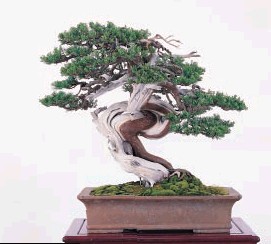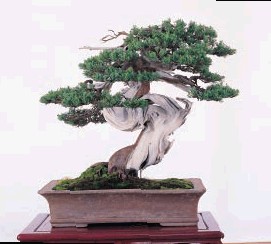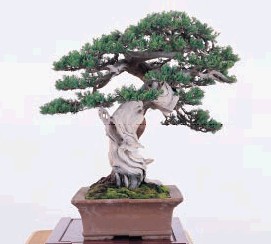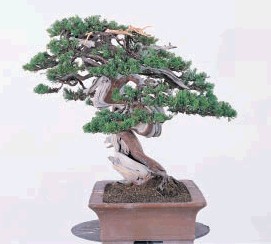Most changes of plant
fiber occur in the bifurcation of braches and trunks. Therefore, the beauty of
curving and delicate wood vein results from these diverse changes of each knot.
Using electric tools can only remove big pieces of useless wood. For the
details, manual Si-Diao must be conducted in order to create the perfect style.
|
|
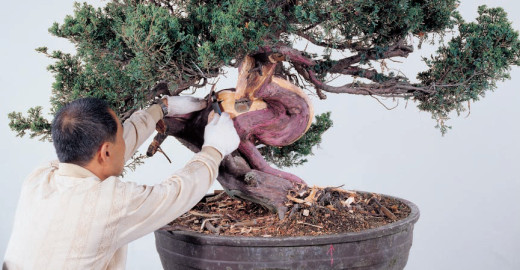
Conducting Si-Diao
|
|
The chapter will demonstrate the process of completing a juniper bonsai
work of art, starting
from raw material to completing your bonsai. The following are the nine
procedures:
1. Evaluating the merits and defects of materials’ characteristics
2. Confirmation of the live vein
3. Developing your plans and blueprint
4. Setting the live vein separating
5. Si-Diao of Shari
6. Arranging and Positioning branches and trunk (aluminum or copper wire
is used)
7. Growing branches and developing live veins
8. Repotting in an appropriate pot
9. Preparation before exhibiting your bonsai
Steps 1 through 6 are illustrated in the pages to follow. Better yet,
come to the 2005 GSBF Convention in Anaheim on November 2-6 and see this
tremendously talented bonsai artist at work. At the convention, Mr.
Cheng will be doing demonstrations, bonsai critiques, and leading
several workshops including one on SiDiao wood-fiber carving.
|
|
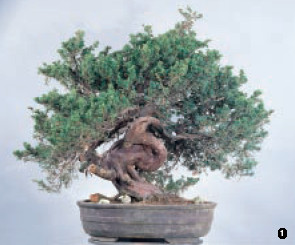
Front View. March, 1996.
|
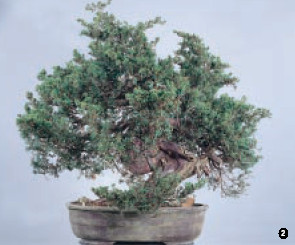
The back View.
|
|
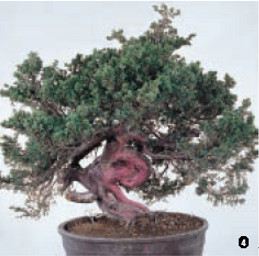
Procedure 2: Mark the live vein that
has been
ascertained with colored pens.
|
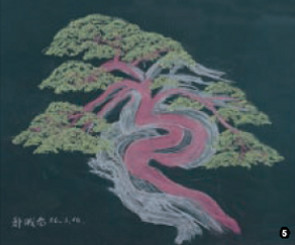
Procedure 3: Choose an elegant bend
to be the
focus of appreciation, and draw a design
draft based on the front view of this focus. |
|
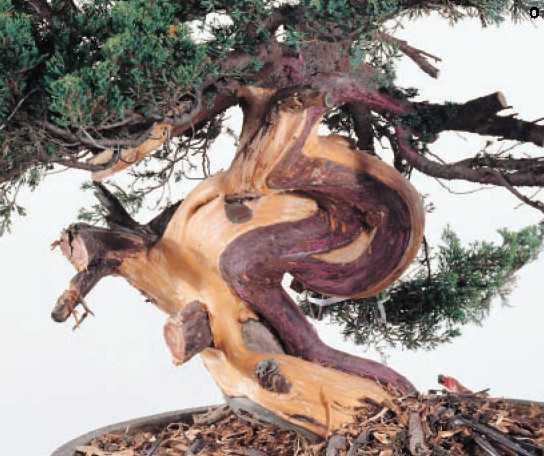
Procedure 4: Keep the live vein and
peel off the external layer of the rest.
The wood becomes smooth, without any three-dimensional impression or
aged appearance.
|
|
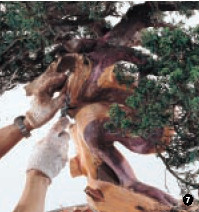
Procedure 5: When starting the
carving,
use the hook burin (E type) to determine the trend of wood fiber. |
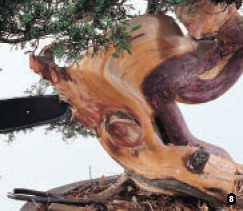
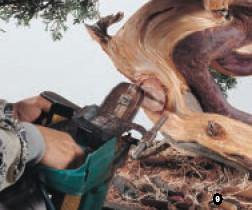
Use electric tools to gouge out the
core of large wood
when carving the hollow knot.
|
|
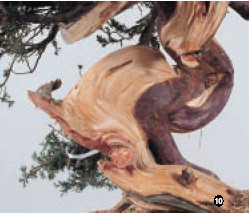
The primarily gouged hollow knot |
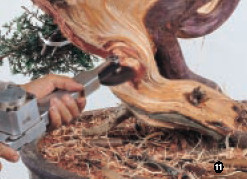
Use the air tool to do the detailed
Si-Diao.
|
|
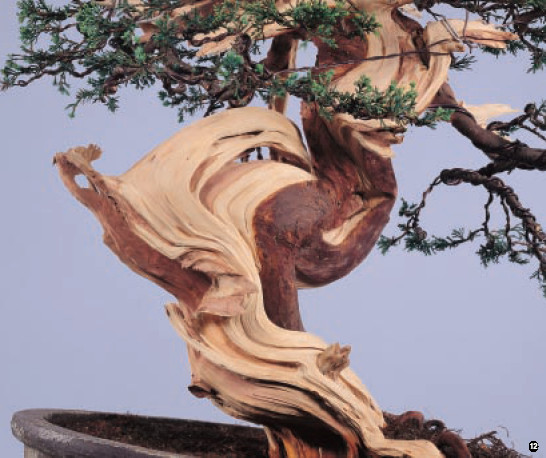
Last procedure: After carving the
wood fiber with hand-held burins,
the Shari reveals its noble and delicate qualities, which can never be
accomplished by electric tools. |
Si-Diao of the Solid Trunk Shari (back view) |
|
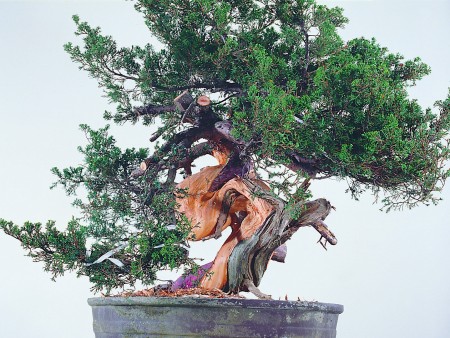 Back
view before carving Back
view before carving
This tree had
long veins and larger twists, so the carving should emphasize the
overall twisting appearance instead of the details. |
|
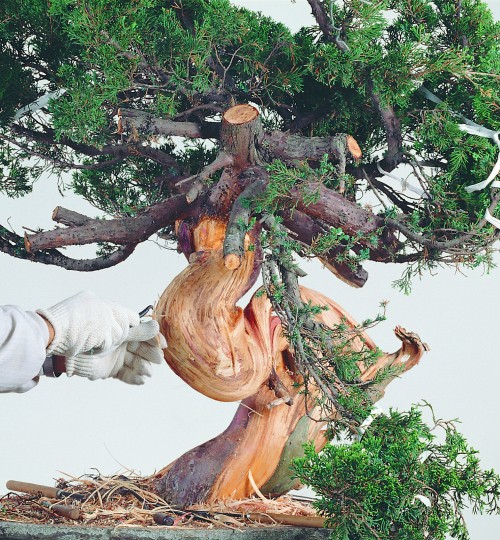
Before carving the trunk Shari with
Si-Diao, start from the parts that do not need large alterations.
|
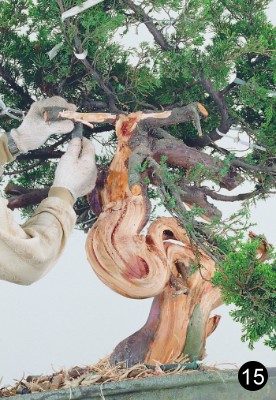
Conduct the peeling method with hand-held burins
when carving thin branch Shari. |
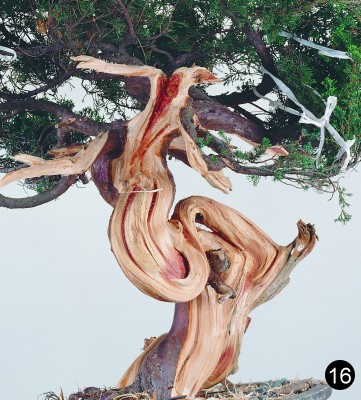
Primarily styled Shari with Si-Diao
|
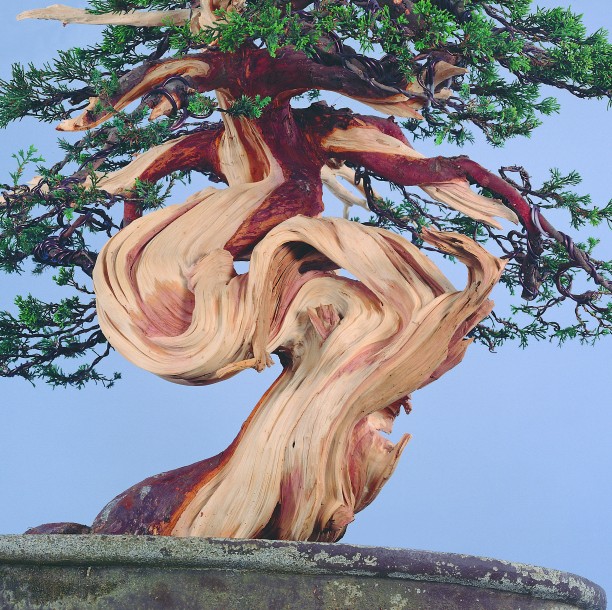
After Si-Diao, the styled back shape
of the trunk presents the three-dimensional
beauty of natural Shari, like a river bearing huge waves. |
Comparison Pictures of Four Sides, from March of 1996 to February of
1999
Four
side views after the primary style arrangement,March of 1996. |
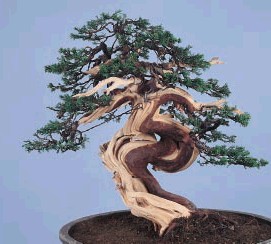
Following the six procedures, the
front view after
arranging and positioning the main branches |
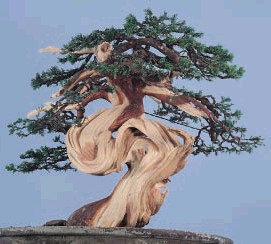
Back view
|
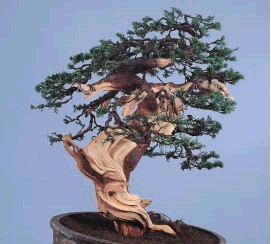
Left view |
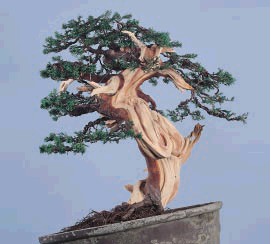
Right view |
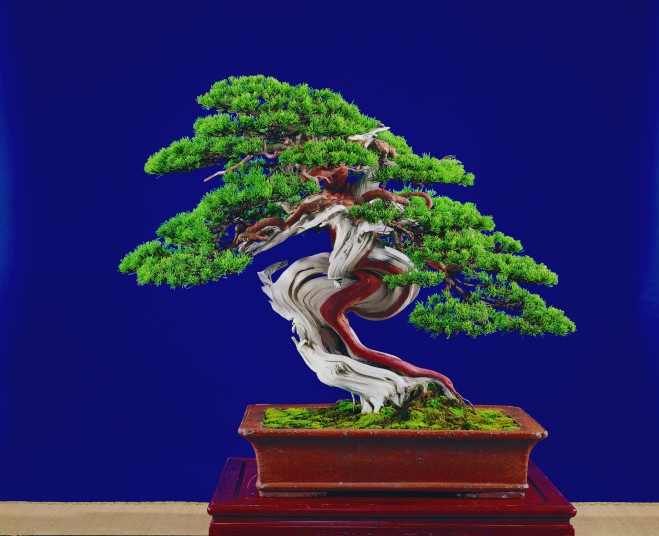
Height : 85 cm, February of 2002.
|
| |
|












 Back
view before carving
Back
view before carving







